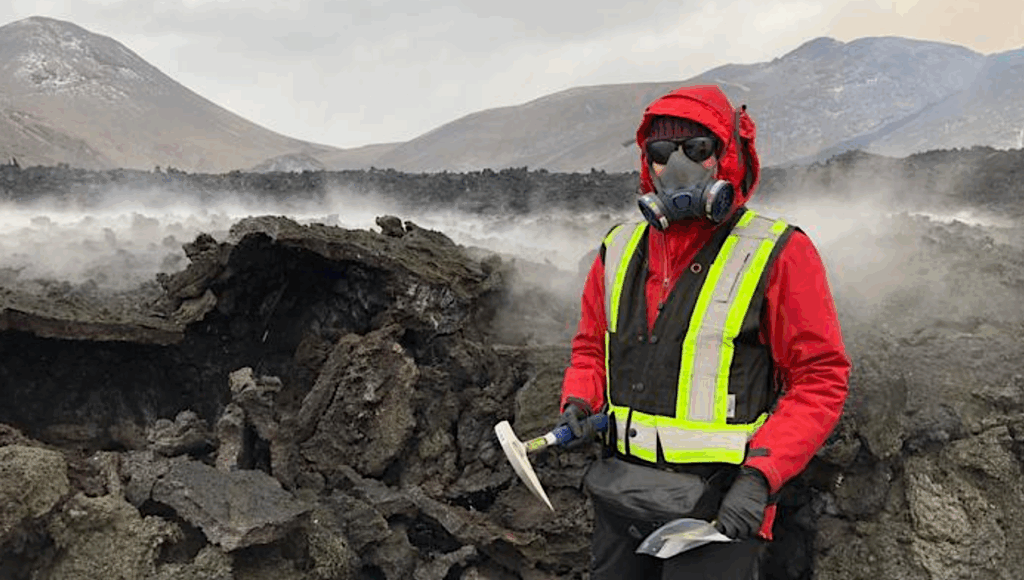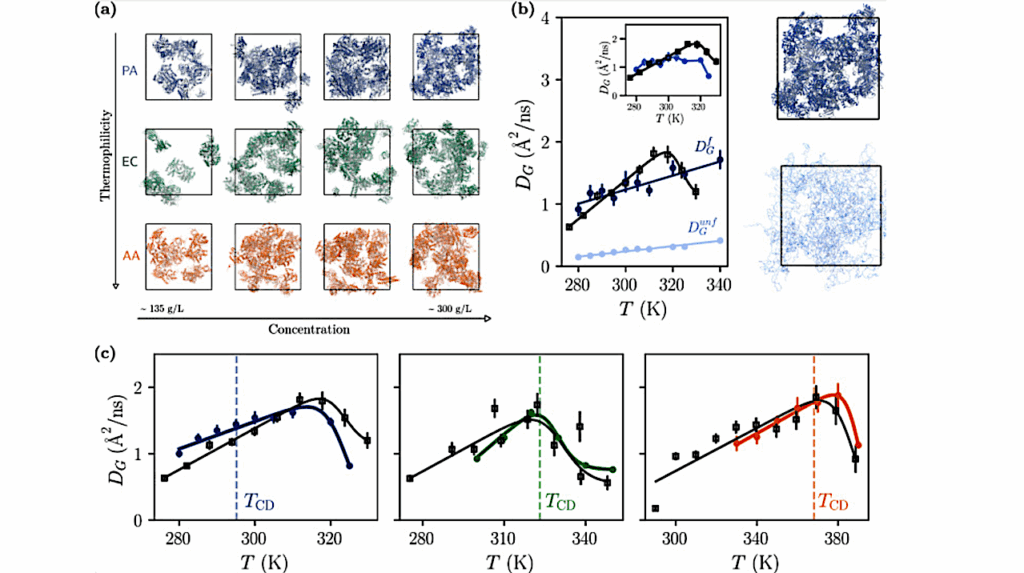Researchers Uncover Extreme Lake — and 3000-Year-Old Microbes — in a Mars-Like Antarctic Environment
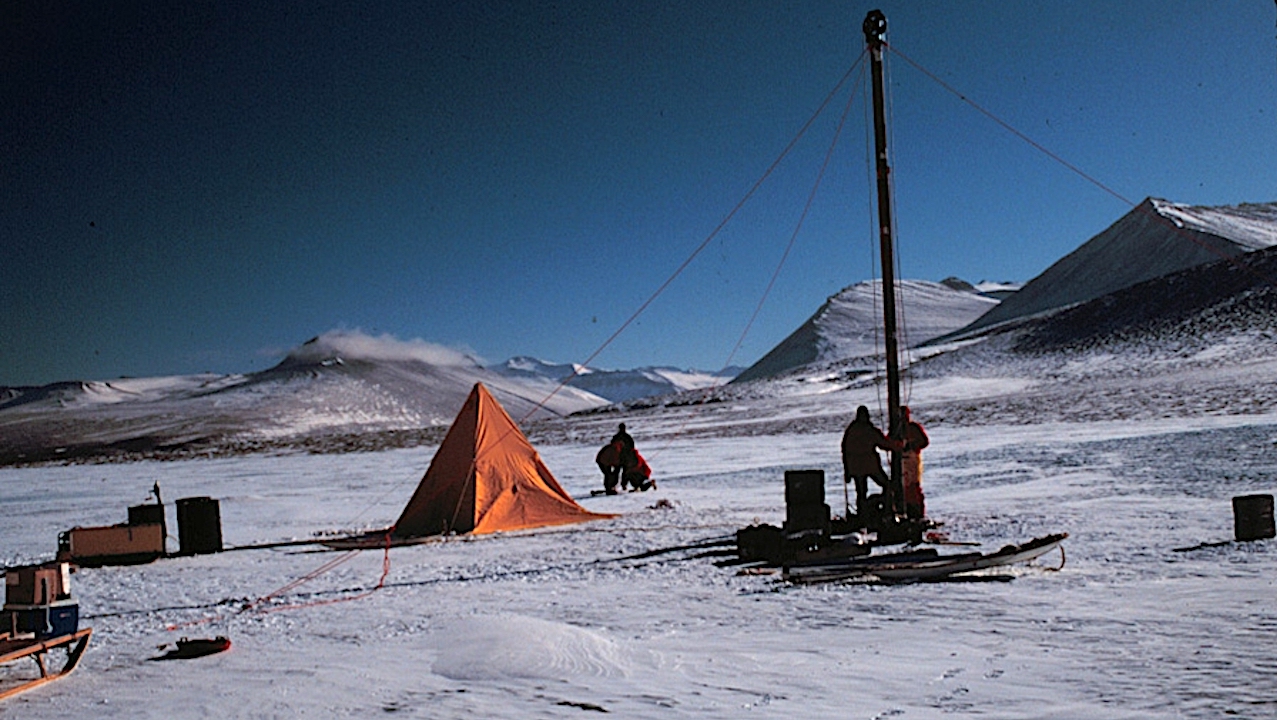
NSF-supported researchers drilling into Lake Vida, an Antarctic “ice-block” lake, have found the lake isn’t really an ice block at all. In the December 16 issue of the Proceedings of the National Academy of Sciences, the team reveals that Antarctic Lake Vida may represent a previously unknown ecosystem, a frigid, “ice-sealed,” lake that contains the thickest non-glacial lake ice cover on Earth and water seven times saltier than seawater.

Aerial photo taken at the eastern end of the Lake Vida looking north towards McMurdo Sound (the lake is in the foreground). This picture was taken in November 2002. Photo Credit: Peter Doran
Because of the arid, chilled environment in which it resides, scientists believe the lake may be an important template for the search for evidence of ancient microbial life on Mars and other icy worlds.
Researchers previously thought Vida was one of several Antarctic lakes that are frozen to their beds year-round. However, using ground-penetrating radar, ice core analyses, and long-term temperature data, the researchers now show that Vida has a thick light-blocking ice cover, a vast amount of ancient organic material and sediment, and a cold, super-salty, liquid zone underlying the ice — an environment that remains liquid at temperatures under -10°C, well below the freezing point of pure water.
Peter Doran of the University of Illinois at Chicago conducted the research along with colleagues at the Desert Research Institute in Reno, Nevada; NASA’s Ames Research Center in Moffett Field, California; and Montana State University in Bozeman.
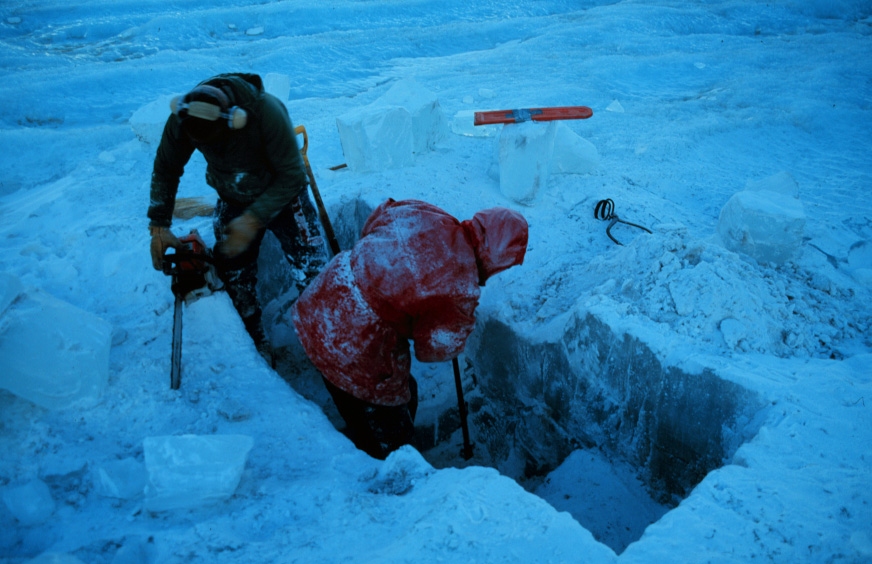
Researchers sawing an observation hole in the permanent lake ice of a dry valley lake. Image courtesy of the Priscu Research Group, Montana State University at Bozeman

Researchers within an observation hole in the permanent lake ice of a dry valley lake. Image courtesy of the Priscu Research Group, Montana State University at Bozeman
The researchers extracted two ice cores from Lake Vida in early Antarctic spring (October) 1996. With an electromechanical drill, team members spent two weeks at temperatures below -35°C drilling a 10-cm-diameter core through 16-m of ice cover.
The researchers filled both of the holes with deionized water (to seal the columns with an ice plug), emplacing temperature measuring instruments in one of the shafts.
“The sediment within the ice made coring extremely difficult and required frequent bit changes and a complete motor replacement at one stage,” said John Priscu of Montana State University.

Small segment of ice core from Lake Vida showing a layer of sediment. Researchers have discovered that the microbes are found with the sediment. Image courtesy of the Priscu Research Group, Montana State University at Bozeman
“It was some very cold drilling,” added Doran. “We were there for two weeks at temperatures approaching -40°C . . . camping. The drillers had a hard time getting through the sediment layers. They were used to drilling clean ice up on the polar plateau; the dirt in the ice tended to dull the cutting bits.”
Despite these difficulties, said Priscu, the core segments collected provided new insights to a previously undescribed Antarctic ecosystem.
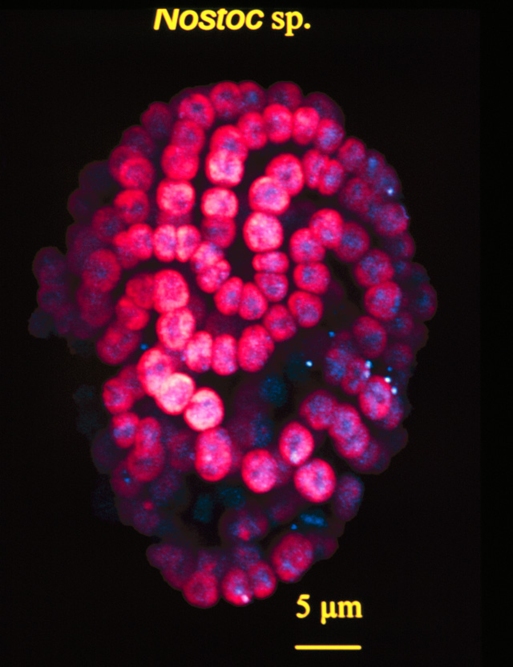
Laser confocal photomicrograph of a microorganism that researchers found in lake ice from the dry valleys (the region where Lake Vida is located). Image courtesy of the Priscu Research Group, Montana State University at Bozeman
From the cores, the scientists found a layered chemical and biological history preserved in the ice, and revived viable microbes that are at least 2,800 years old.
“The ice covers of these lakes represent an oasis for life in an environment previously thought to be inhospitable,” said Priscu. “These life forms may possess novel ice-active substances such as antifreezes and ice nucleation inhibitors that allow the organisms to survive the freeze-thaw cycles and come back to life when exposed to liquid water,” he said.
“Importantly, the cold temperatures preserve DNA extremely well making them perfect ‘ice museums’ for the study of ancient DNA,” Priscu added. Research on the ancient DNA will provide an evolutionary and functional history of the microorganisms, he said, and he believes the findings might help scientists draw implications for the type of life that may exist in Lake Vostok, a huge lake which lies more than 4 km beneath the East Antarctic Ice Sheet.
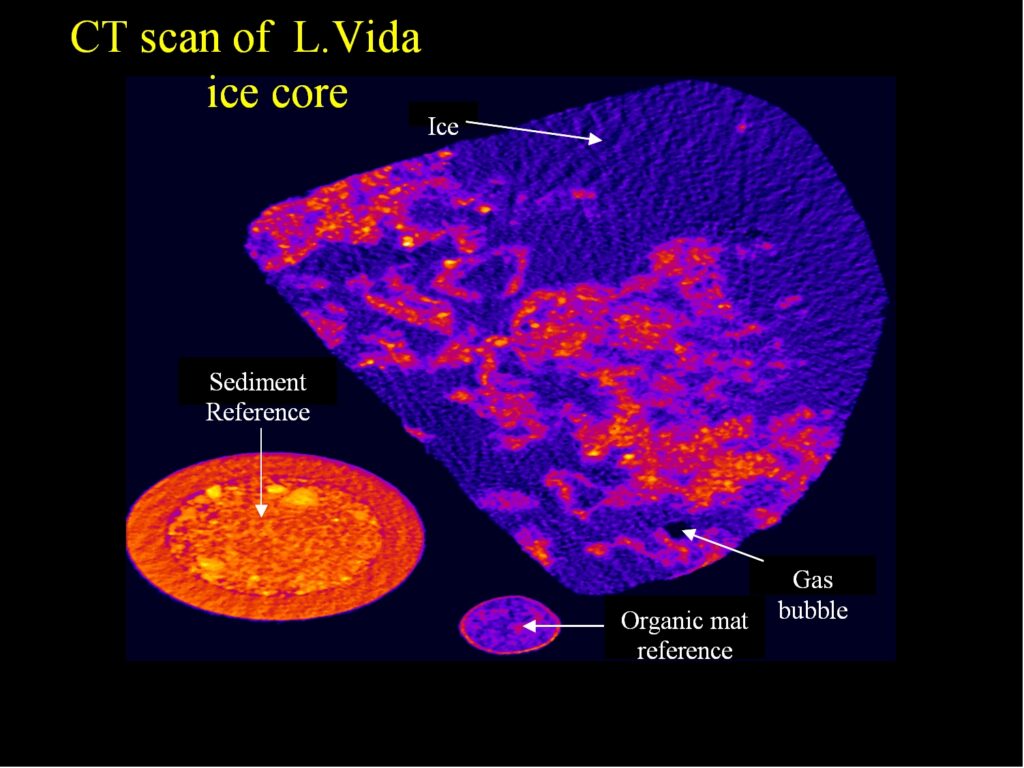
Computed tomography (CT) image of a section of ice core from Lake Vida showing the organic (microbe containing) material surrounding sediment in an icy matrix. The image has been artificially colored by the researchers so that organic material appears bluish-purple and sediment appears orange-red. Image courtesy of the Priscu Research Group, Montana State University at Bozeman
Lake Vida, more than 5 km long, is one of the largest in the cold Antarctic desert region known as the McMurdo Dry Valleys. The area receives less than 10 cm of snow per year and the average annual temperature hovers around -30°C.
Using data from the ice sensors and from an automatic meteorological station on the shore of the lake, the researchers created a thermodynamic model to understand the complex melting and freezing processes within Vida.

Helicopter support for the researchers at Lake Vida when the temperature was -40’C (-40’F) – note the contrail behind the aircraft. Image courtesy of the Priscu Research Group, Montana State University at Bozeman
The model provided a better understanding of the evolution of the ice cover and the underlying salt water. The freezing, growing ice cover concentrates the salt, thereby depressing the freezing point of the water, and extending the viability of a lake ecosystem.
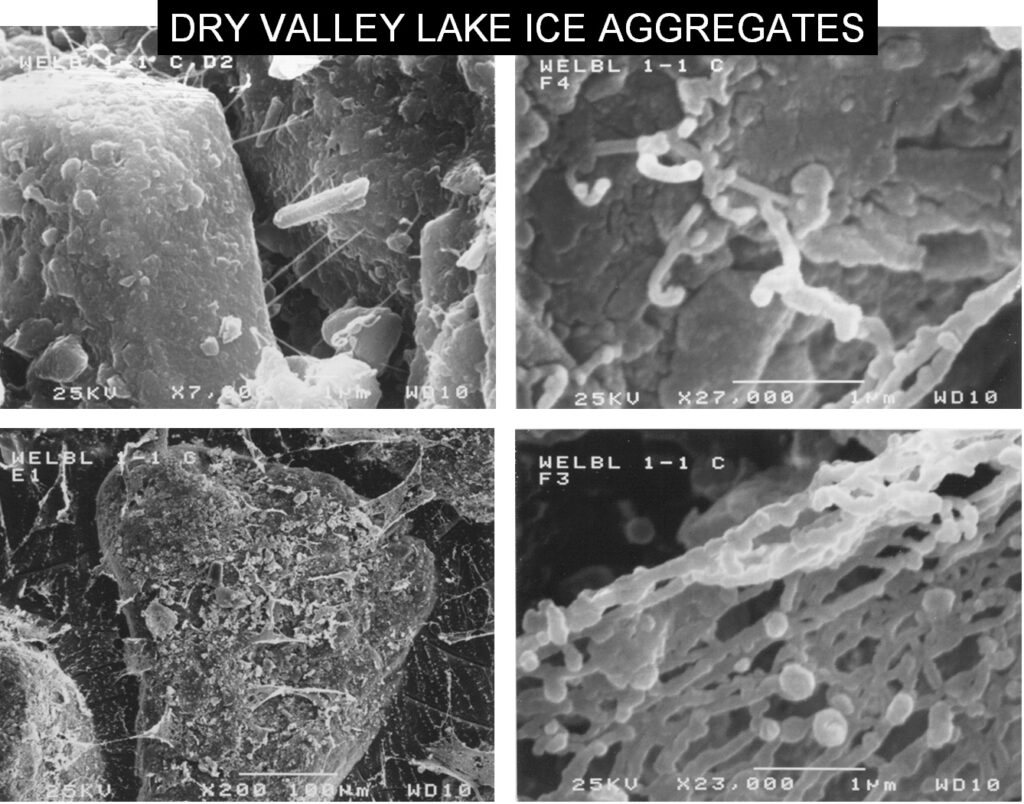
Filament-like lake-ice microbes found in ice from the dry valleys (the region where Lake Vida is located). These filamentous bacteria dominate the ice covers of these lakes. Image courtesy of the Priscu Research Group, Montana State University at Bozeman
“Lake Vida provides insight into a novel terrestrial ecosystem,” said Doran. “What happened at Lake Vida may have been the fate of other Antarctic lakes, during even colder times, and more tropical aquatic ecosystems during extreme global glaciations of the past, such as the ‘snowball Earth’ 550 Million years ago.”

Bubbles associated with sediment in dry valley lake ice. The bubbles tell us that there was liquid water present above the sediment at one time and that the water froze from the top down. Image courtesy of the Priscu Research Group, Montana State University at Bozeman
The researchers believe that Lake Vida may also offer clues to likely environments for finding signs of ancient, Martian, microbial life. Said Doran, “Mars is believed to have a water rich past, and if life developed, a Lake Vida-type ecosystem may have been the final niche for life on Mars before the water bodies froze solid.”
The research was carried out as part of NSF’s McMurdo Long Term Ecological Research (LTER) project, and was also funded in part by NASA’s Exobiology program.
For maps of the McMurdo Dry Valleys region of Antarctica, please see the McMurdo Long Term Ecological Research (LTER) project homepage at: http://huey.colorado.edu/LTER/

Meteorological Station with “Ice-free” Lake Vida in the background. This image was taken during January 2002 at the west end of Lake Vida in Victoria Valley. Lake Vida in the background apparently has no ice on it, but in fact this is summer meltwater that has flowed onto the surface of the thick permanent Lake Vida ice cover. In the image is about 1 m of muddy water above 19 m of ice, all sitting on top of a hypersaline brine. The meteorological station in the foreground is operated by the NSF-supported McMurdo Long Term Ecological Research site and the station has been operating at this site since 25 Nov 1995. Data from the station was used for the Lake Vida research. Photo Credit: Thomas Nylen
Astrobiology




